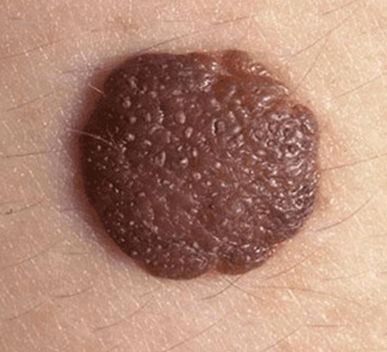Moles, also called nevi, are common growths on the skin. Typically, brown or black, moles are formed by clusters of melanocytes, the pigmented cells that produce skin color. Moles may be raised or flat, and can darken in sunlight, and during puberty or pregnancy. Most moles form in childhood and will grow as the child grows. It is not uncommon for a person to have between 10 to 40 moles by adulthood.
Tues: 8:30am - 3:00pm
Wed: 12:00pm - 6:00pm
Thurs: 8:30am - 3:00pm
Fri: Closed
Sat: 8:30am - 12:30pm
Sun: Closed
Greenvale, NY 11548
Moles


What are moles?
What causes moles?
Moles form when melanocytes grow together instead of spreading throughout the skin. They can grow anywhere on your skin including your scalp, soles, and even under your nails. Moles are usually one color, round and do not change from month to month. Most moles are not dangerous. Moles that are more likely cancerous will look different than your existing moles. New moles and changes in existing moles in adults should be evaluated by a board-certified dermatologist as these can be a sign of melanoma. Your dermatologist should evaluate any mole that changes in color, height, size, or shape. Moles that bleed, ooze, itch, or become painful should also be checked immediately. Children with changing or bleeding moles, moles with jagged borders, large moles or more than 50 moles should also be checked by a board-certified dermatologist.
How dermatologists diagnose moles
Your dermatologist can diagnose moles by examining your skin. A dermatoscope, a small handheld tool that magnifies the appearance of skin lesions, may be used to evaluate your moles. If a mole is concerning for skin cancer, your dermatologist will recommend a biopsy (removing a tissue sample of the mole) for microscopic evaluation.
How dermatologists treat moles
Most moles do not require treatment. Your dermatologist can surgically remove a cancerous mole in the office on an out-patient basis, meaning you go home the same day as the procedure.
In cosmetic cases, if you are self-conscious about your appearance, you may want your dermatologist to surgically remove the mole. Men with a facial mole may find this helpful so they can shave without cutting a mole and potentially causing bleeding.
As with any surgical procedure there is some risk of scarring after mole removal. Your dermatologist may instead suggest using makeup to cover a mole rather than surgically removing it if scarring is a concern.
If you have a growth on your skin that is symptomatic or concerning, click here to schedule an appointment with our board-certified dermatologists or walk into Walk-in Dermatology at your convenience for immediate evaluation.






